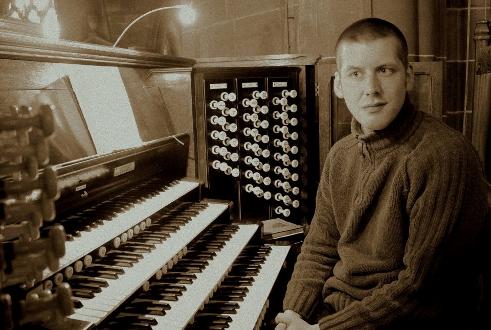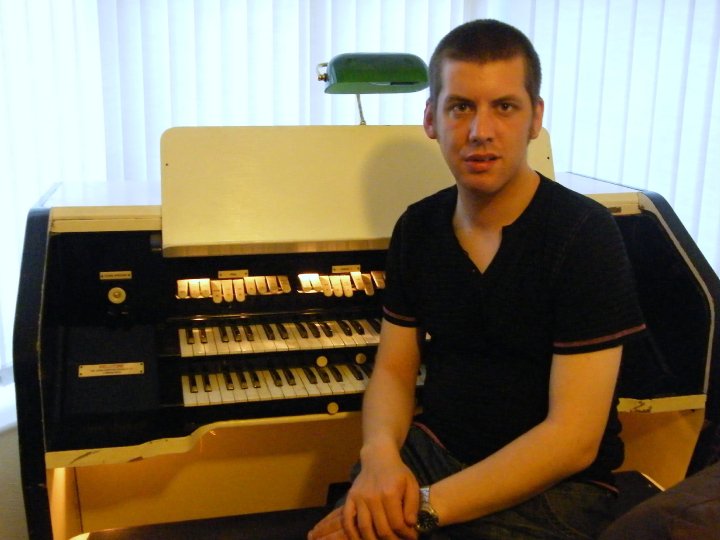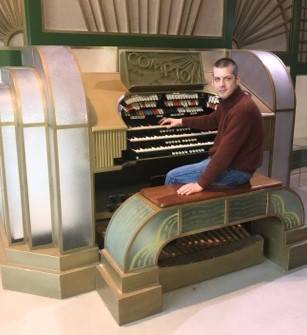



Hello and welcome to my website which is dedicated to my favourite organ builder - the JOHN COMPTON ORGAN COMPANY LTD!
Eversince I can remember, I have always had a fascination for all things mechanical and always wanted to know how things work. It is therefore perhaps no surprise that as a 10 year old when walking past the organ console at church that I grew fascinated and decided to discover more! This was to be the start of a passion for playing the organ!
A trip to Blackpool a few years later saw me discover a whole different side to organ music - the theatre organ!
I am certainly no professional organist - far from it - but I hope my videos on this site are able to give a good impression of organs built by my favourite organ company - Compton!
As well as playing the organ my other interests include clocks, railways, 1930s architecture and classic television. I live in Bolton with my fiancee Michelle and our 4 cats!
What is it about Compton's that I find so fascinating? It all started when at the age of 12 I had started to develop an interest for the theatre organ. I was well aware of the Wurlitzer company and assumed all theatre organs were built by this firm until I got the opportunity to play on a theatre organ in Malvern and it was here I had my first encounter with a Compton organ! At this time I assumed Comptons were just builders of theatre organs but in fact, theatre organs were just a small part of this company and I soon discovered that the firm had a long history spanning from the late 19th century right up until 1969.
No other organ company that I know of produced organs for such a vast range of venues including cathedrals, abbeys, churches, village chapels, cinemas, civic halls, holiday camps, working mens clubs, piers and crematoriums!
Over the last 10 years I have made a point of visiting various different Compton organs around the country and taking the opportunity to do videos which I have shared on my youtube channel.
Many Compton cinema organs that survive have been altered, enlarged etc but I have been fortunate in getting to visit three of my favourite and these are the Plaza cinema in Stockport, St John Vianney Church in Clayhall and Southampton Guildhall - the latter not strictly a 'cinema organ' of course. Church wise there are still plenty of Compton organs to choose from that survive in original condition and some of which have been very nicely restored. These range from small 2 rank 'Miniatura' models and 'electrone' instruments in small village and urban churches to large 4 manual instruments in city churches.
From the very outset, it has been my aim to try and make a feature of the post war electronic 'electrone' instruments which made up a large part of the Compton company from the late 1930s but is so often overlooked and not given enough appreciation. These are sadly disappearing at a fast rate as a result of many churches being lured by digital instruments and of course churches closing is another issue. A third problem is the electrones, now a minimum of 43 years of age, are reaching that time when they need parts replacing, maintenance etc. Spare parts are difficult to obtain as is finding people with the skills to do this in the age of a 'throw away society'. Therefore, buying a digital instrument (or even abandoning the organ altogether) is the only option available for most churches. Because electrones are not on any list such as the 'National Pipe Organ Register', finding them is a real challenge but so far I have managed to video most of the popular models from the 1950s and 1960s (namely the CH2, Sonatina, Cantata, 357 and 363) and even a rare 347!
I hope you find this site of interest and gives a good illustration to what was a huge, forward thinking, advanced British organ building company.
Every blessing,
Chris Lawton